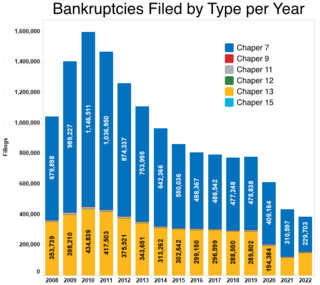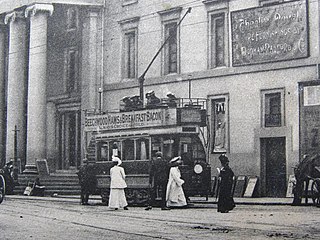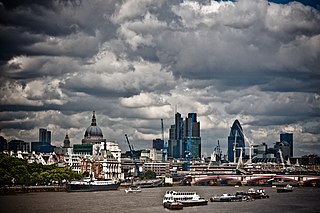Bankruptcy is a legal process through which people or other entities who cannot repay debts to creditors may seek relief from some or all of their debts. In most jurisdictions, bankruptcy is imposed by a court order, often initiated by the debtor.

In the United States, bankruptcy is largely governed by federal law, commonly referred to as the "Bankruptcy Code" ("Code"). The United States Constitution authorizes Congress to enact "uniform Laws on the subject of Bankruptcies throughout the United States". Congress has exercised this authority several times since 1801, including through adoption of the Bankruptcy Reform Act of 1978, as amended, codified in Title 11 of the United States Code and the Bankruptcy Abuse Prevention and Consumer Protection Act of 2005 (BAPCPA).
A fraudulent conveyance or fraudulent transfer is the transfer of property to another party to prevent, hinder, or delay the collection of a debt owed by or incumbent on the party making the transfer, sometimes by rendering the transferring party insolvent. It is generally treated as a civil cause of action that arises in debtor/creditor relations, typically brought by creditors or by bankruptcy trustees against insolvent debtors, but in some jurisdictions there is potential for criminal prosecution.

Salomon v A Salomon & Co Ltd[1896] UKHL 1, [1897] AC 22 is a landmark UK company law case. The effect of the House of Lords' unanimous ruling was to uphold firmly the doctrine of corporate personality, as set out in the Companies Act 1862, so that creditors of an insolvent company could not sue the company's shareholders for payment of outstanding debts.

Derry v Peek [1889] UKHL 1 is a case on English contract law, fraudulent misstatement, and the tort of deceit.

The Bankruptcy and Insolvency Act is one of the statutes that regulates the law on bankruptcy and insolvency in Canada. It governs bankruptcies, consumer and commercial proposals, and receiverships in Canada.
Northern Pipeline Construction Company v. Marathon Pipe Line Company, 458 U.S. 50 (1982), is a United States Supreme Court case in which the Court held that Article III jurisdiction could not be conferred on non-Article III courts.
The tools of trade are items that are exempt from attachment under bankruptcy law or from seizure.
Asset protection is a set of legal techniques and a body of statutory and common law dealing with protecting assets of individuals and business entities from civil money judgments. The goal of asset protection planning is to insulate assets from claims of creditors without perjury or tax evasion.

United Kingdom insolvency law regulates companies in the United Kingdom which are unable to repay their debts. While UK bankruptcy law concerns the rules for natural persons, the term insolvency is generally used for companies formed under the Companies Act 2006. Insolvency means being unable to pay debts. Since the Cork Report of 1982, the modern policy of UK insolvency law has been to attempt to rescue a company that is in difficulty, to minimise losses and fairly distribute the burdens between the community, employees, creditors and other stakeholders that result from enterprise failure. If a company cannot be saved it is liquidated, meaning that the assets are sold off to repay creditors according to their priority. The main sources of law include the Insolvency Act 1986, the Insolvency Rules 1986, the Company Directors Disqualification Act 1986, the Employment Rights Act 1996 Part XII, the EU Insolvency Regulation, and case law. Numerous other Acts, statutory instruments and cases relating to labour, banking, property and conflicts of laws also shape the subject.

Re Jeavons, ex parte Mackay (1873) LR 8 Ch App 643 is a UK insolvency law case. It decided that a creditor could not reserve an obligation to himself in priority of other creditors if a company were to go into liquidation.

The Fraudulent Conveyances Act 1571, also known as the Statute of 13 Elizabeth, was an Act of Parliament in England, which laid the foundations for fraudulent transactions to be unwound when a person had gone insolvent or bankrupt. In the United Kingdom, the provisions contained in the 1571 Act were replaced by Part IX of the Law of Property Act 1925, which has since been replaced by Part XVI of the Insolvency Act 1986.
Forster v Wilson (1843) 152 ER 1165 is a UK insolvency law and English property law case, concerning the right to set off a debt against an insolvent company. It establishes that a person with a right to set off is not subject to the pooling of assets in insolvent liquidation.
Cooper Manufacturing Co. v. Ferguson, 113 U.S. 727 (1885), was a suit regarding the legitimacy of a sale of a steam engine and other machinery in the State of Ohio.
The Parliament of Canada has exclusive jurisdiction to regulate matters relating to bankruptcy and insolvency, by virtue of Section 91(2) of the Constitution Act, 1867. It has passed the following statutes as a result:
The history of bankruptcy law begins with the first legal remedies available for recovery of debts. Bankruptcy is the legal status of a legal person unable to repay debts.
Bankruptcy in Irish Law is a legal process, supervised by the High Court whereby the assets of a personal debtor are realised and distributed amongst his or her creditors in cases where the debtor is unable or unwilling to pay his debts.
A Commissioner of Bankruptcy was, from 1571 to 1883, an official appointed to administer the estate of a bankrupt with full power to dispose of all his lands and tenements. Bankrupts were defined as insolvent persons engaged in trade or business and kept distinct from other insolvents until 1861. The proceedings of that administration were the distribution of the property of an insolvent person to that person's creditors in proportion to the debts.
Alderson v Temple (1746-1779) 1 Black W 660, 96 ER 384 is a UK insolvency law case, concerning voidable transactions under what was the Fraudulent Conveyances Act 1571, and what is now the Insolvency Act 1986 section 423.
Anguillan bankruptcy law regulates the position of individuals and companies who are unable to meet their financial obligations.